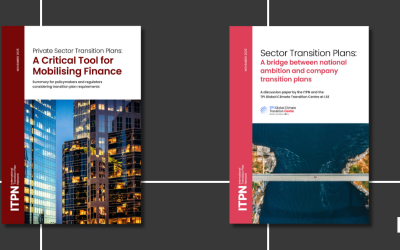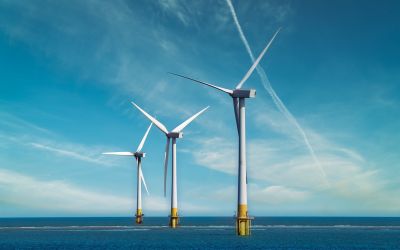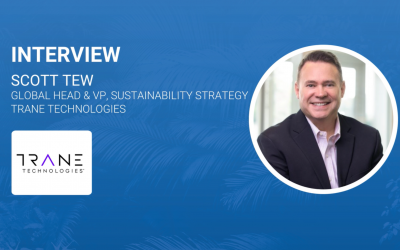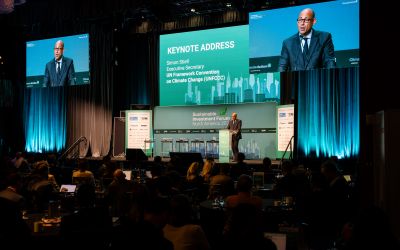MaryKate Bullen on the importance of investing in forestry, land management and conservation
Ahead of the Sustainable Investment Forum North America 2019, taking place in New York on the 25 September 2019 during NYC Climate Week, we caught up with MaryKate Bullen to discuss the importance of investing in forestry, land management and conservation.

Ahead of the Sustainable Investment Forum North America 2019, taking place in New York on the 25 September 2019 during NYC Climate Week, we caught up with MaryKate Bullen, Director of Sustainability & Communications at New Forests to discuss the importance of investing in forestry, land management and conservation.
Let’s start with some background on New Forests and your role there?
New Forests is a specialist investment manager, offering leading-edge strategies in forestry, land management, and conservation. Our investment philosophy recognises that institutional investment can drive both the productive use and long-term stewardship of forests and land. We seek to create shared value, where we not only execute investments that generate excellent returns to our clients but also enrich the landscapes and communities where we operate by addressing environmental and social challenges. We currently manage around 4 billion in AUM across nearly 1 million hectares of forestry and conservation investments in the United States, Australia-New Zealand, and Southeast Asia.
With 10+ years in the company, I have developed and lead New Forests’ corporate sustainability programs, including our responsible investment and impact practices. I’m driven by the urgency to bring more diverse and scaled private capital to solutions at the intersection of forestry and land management, climate action, and sustainable development. My current priorities include developing new blended finance approaches to scale our impact and reach; leading our impact management program; and working with external and internal stakeholders to promote best-in-class ESG integration and the growth of responsible investment in forestry.
What is the importance of investing in forestry, land management and conservation, taking into account a long-term view of economic and development trends?
As global demand for resources grows, there is a need to increase forest productivity while ensuring the conservation of the world’s remaining natural forests. New Forests seeks to create investment strategies that deliver strong returns while providing lasting solutions to this challenge.
Forestry is at the nexus of some of the greatest social and environmental challenges and opportunities over the coming decades. In the face of climate change, rising population and consumption, and the clear need to transition to a low-carbon and circular economy, forests and land management models must increasingly integrate production, conservation, and societal values in sustainable landscapes. Responsible investment enables asset owners to contribute to ensuring this transition.
Furthermore, as the global economy transitions away from fossil fuels and toward low-carbon goods and services, timber and wood products will become an increasingly important source of fibre in a carbon constrained world. In fact, recent and ongoing innovation in engineered wood products and biomaterials opens exponential opportunities for wood as a sustainable input for a range of end products. Yet we won’t be able to meet rising global wood demand – set to as much as triple from 2014 to 2050 – with existing timber production and extraction models. We need to rapidly expand the world’s production forests and plantations, using socially appropriate and environmentally friendly practices.
New Forests believes this provides a near-term market opportunity to establish the resource base and capitalise a sustainable forestry sector that is capable of meeting the world’s growing demand for wood products. Given that most of the world’s forests are located in rural and remote areas, this also presents an important social opportunity to support a just transition, where forestry provides local benefits to communities and workers. Ultimately, if we are to meet the aims of the Sustainable Development Goals, forestry and land management must be viewed and managed as sectors that support thriving rural communities, safeguard healthy ecosystems, and provide certified, renewable goods.
What does the future hold for the forestry asset class in light of recent interests in forestry for carbon capture capacity?
It’s been said that the earliest “technology” capable of mitigating climate change is the tree. When you take that technology to scale, it’s a forest. Yet the global potential of forestry to be a significant driver of carbon capture and storage remains largely untapped.
Climate scientists and major environmental NGOs agree that as much as 37% of near-term, cost-effective mitigation can come from forests, food, and land. This means we can remove many decades worth of GHG emissions from the atmosphere, by managing forests better and growing new forests responsibly. In fact, forestry activities represent around three-quarters of that mitigation potential. Importantly, some of the highest levels of mitigation can come from managing forests for commercial timber uses on a renewable basis. This is because the forest sequesters carbon dioxide as it grows, stores the carbon in its biomass, and when harvested and used in durable wood products – like wooden building materials, furniture, and flooring – that carbon storage continues. At the same time, the sustainable forest management cycle ensures that the forest regenerates and accrues more carbon in the next generation of trees, generating a net accumulation effect. This positive cycle of carbon sequestration and storage provides a greater climate benefit than purely conservation-focused environmental restoration, all while also generating a financial return.
Scaling up sustainable forestry investment and the expansion of the forestry asset class present an unparalleled opportunity to generate “negative emissions” at scale and to do so in a way that aligns with investors’ financial and portfolio objectives. New Forests is focused on demonstrating and scaling up immediately actionable investment strategies that capitalise on the ability of forests to align investment returns with beneficial climate impacts.
What are the importance of events such as the Sustainable Investment Forum for businesses interested in forestry and conservation investment?
New Forests looks to leading industry events like the Sustainable Investment Forum to help bring perspective on how investors can support their portfolio decarbonization and sustainable development alignment through considering the role of sustainable forestry in their portfolios.
As the international community, investors, and corporate actors grapple with managing climate risk and a just transition toward a carbon neutrality, we cannot forget that forests and land need to be an important part of the process. Even if we completely stopped all GHG emissions globally right now, the science tells us we cannot avoid catastrophic impacts of climate change without using negative emissions to actively decrease the GHGs already in the atmosphere. There are immediately actionable investment opportunities that can achieve this while still providing attractive risk-adjusted returns. Yet forests make up only a modest part of most institutional investment portfolios and the institutional penetration in the sector is at best around $150-200 billion dollars. This level of investment won’t generate the climate results we need from the world’s forest resources. Instead we must dramatically scale up the forest sector – we believe it can be a $1 trillion asset class by 2050. To achieve this, we need collaborative approaches to forge new approaches to investing in forests and conservation, we need to see a meaningful global carbon price that recognises the climate function of forests, and we need to align policy and consumer preferences with sustainable sourcing requirements. If we can do this, we will see the realization of forestry as a “natural infrastructure” asset class, providing not only ecosystem services but also the renewable wood fibre the world needs to sustain a thriving, low-carbon, and circular economy.
New Forests is a Silver Sponsor at the Sustainable Investment Forum North America, taking place in New York on 25 September 2019 during Climate Week NYC, find out more here.
Visit New Forests’ website here.






